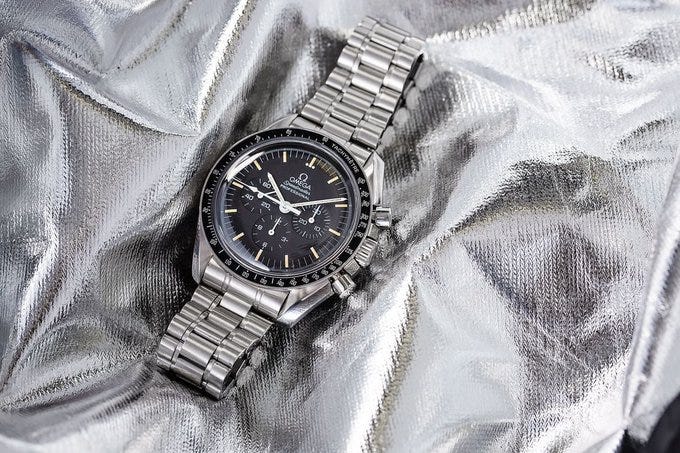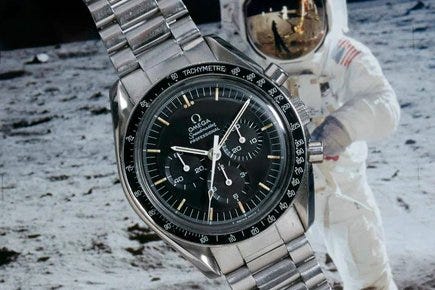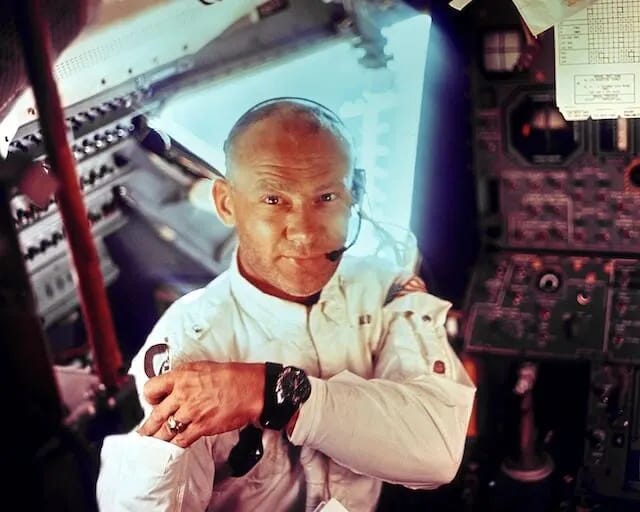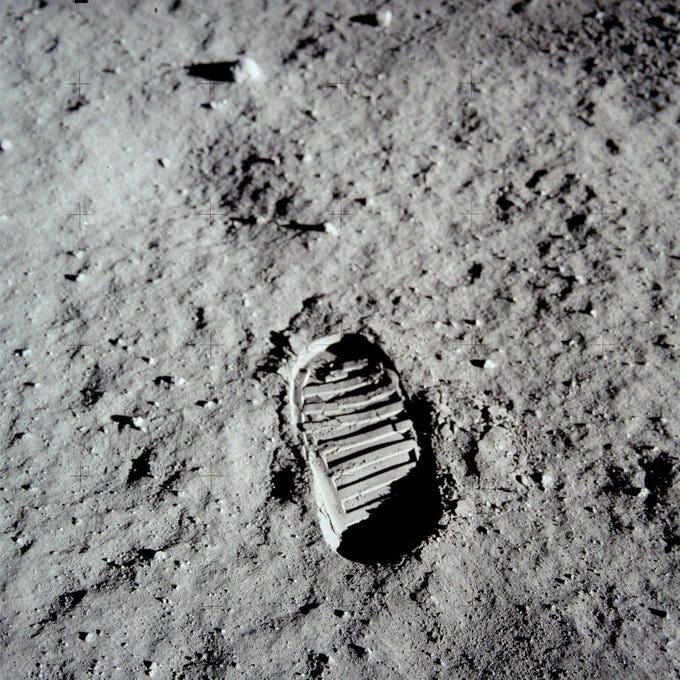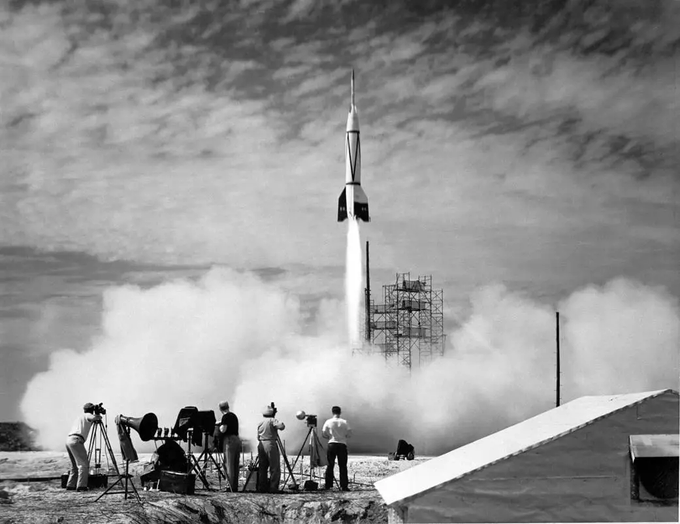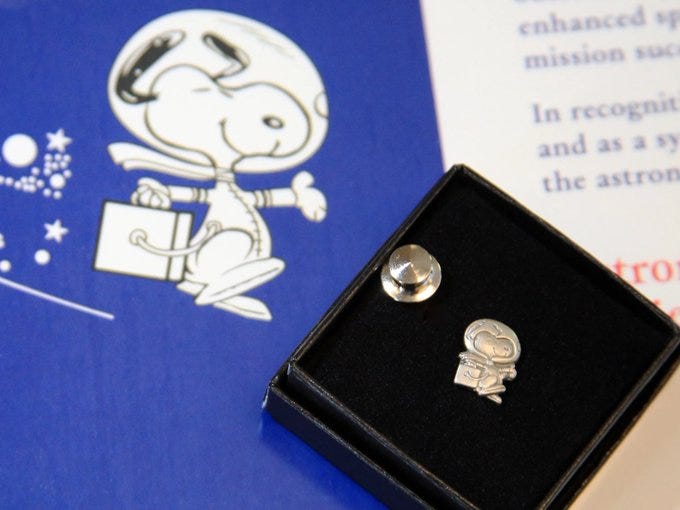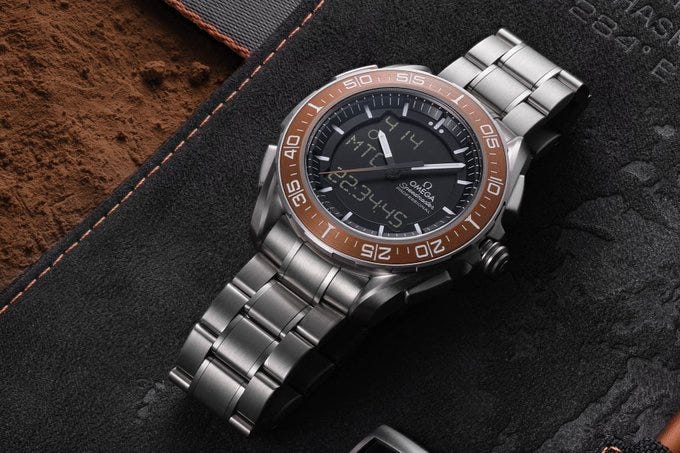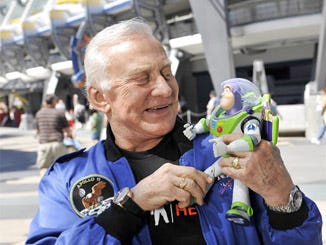The truth behind Omega and the Moon
How were Omega selected, did Omega actually go to the moon and how they saved the lives of three astronauts. Learn all this in the thread below!
On May 25, 1961, John F. Kennedy stood before Congress and made history: "I believe that this nation should commit itself to achieving the goal, before this decade is out, of landing a man on the Moon and returning him safely to the Earth." The stakes? Immense. This wasn’t just about space. It was about asserting technological dominance all over the world.
NASA needed the absolute best equipment for this mission — down to the watches the astronauts would wear. The challenge? Space is unforgiving. A wristwatch would need to survive:
- Temperatures of +250°F to -250°F
- Intense vibrations during lift-off
- Zero gravity and vacuum conditions
Jim Ragan, NASA’s engineer, was tasked with finding a watch that could survive these conditions. He sent a detailed list of requirements to leading watch manufacturers. Out of 10 brands contacted, only three dared to enter the competition:
- Rolex
- Longines
- Omega
The competition was brutal.
The watches were subjected to insane tests to replicate the pressures of space and beyond. As Ragan described: "Our set went through 10 different environments. Some of them were totally unrealistic. Plus or minus 250 degrees Fahrenheit. That’s tough on a watch. Thermal vacuum was tough on a watch." After the very first test, Rolex and Longines were already out of the competition. That left only Omega to try and survive the rest.
In the end, only one watch survived all the tests: the Omega Speedmaster. Ragan recalled his relief: "The Omega made it through all the testing and when that happened, before I announced who had made it, I went back to the astronauts and said, 'Which one of these do you like?' And thank goodness, they liked the Omegas the best." It was official: the Omega Speedmaster was certified as the only watch qualified for manned space missions and extravehicular activity.
Fast forward to July 16, 1969. The Apollo 11 crew — Neil Armstrong, Buzz Aldrin, and Michael Collins — lifted off from Cape Kennedy with Omega Speedmasters strapped to their wrists. Their mission wasn’t just to land on the Moon.
It was to make history.
On July 20, 1969, 109 hours into the mission, The Eagle landed on the Moon. As Neil Armstrong stepped onto the surface, he relayed those iconic words: "That’s one small step for man, one giant leap for mankind." Minutes later, Buzz Aldrin followed, wearing the Omega Speedmaster on his wrist.
The Moonwatch was born.
The Speedmaster wasn’t just a backup plan. It played a critical role in timing every part of the mission:
- Takeoff.
- Ejection into translunar orbit.
- Every precise course correction.
A single mistake in timing could have been catastrophic.
The Omega Speedmaster faced its greatest test in 1970 during the ill-fated Apollo 13 mission.
On April 13, 1970, just two days into the mission, an oxygen tank exploded aboard the spacecraft, crippling its power supply and life-support systems. The astronauts — Jim Lovell, Jack Swigert, and Fred Haise — were left in a desperate fight for survival.
The explosion forced the crew to abort their Moon landing and focus on one thing: getting home. But there was a massive problem. The spacecraft was now off course, hurtling through space at the wrong angle.
To make it back to Earth safely, the crew needed to execute a precise 14-second engine burn to correct their trajectory.
Why 14 seconds? Any longer, and they’d overshoot Earth entirely. Any shorter, and they’d re-enter the atmosphere at an angle too steep to survive. This wasn’t just a matter of precision — it was life or death.
With the spacecraft's systems malfunctioning, the astronauts had no choice but to rely on their Omega Speedmaster for timing.
James Lovell described the tense moments: "We had to burn the engine. Have it only for a certain length of time: 14 seconds. We used the (Omega) watch that Jack had on his wrist, and I had to control the spacecraft."
Picture the scene:
Jack Swigert carefully monitored the Omega Speedmaster, counting the seconds.
Jim Lovell manually controlled the spacecraft, adjusting its position.
Fred Haise supported their efforts in the cramped, freezing conditions of the Lunar Module.
Against all odds, the plan worked. The Speedmaster timed the burn with absolute precision, allowing the crew to realign their trajectory and safely re-enter Earth's atmosphere. On April 17, 1970, four harrowing days after the explosion, Apollo 13 splashed down in the Pacific Ocean. The world breathed a sigh of relief, and the Omega Speedmaster cemented its place as more than just a watch — it was a savior in space. NASA awarded Omega its highest honor, the Silver Snoopy Award, for their role in saving Apollo 13.
The Speedmaster wasn’t done making history. It was worn on six Moon landings and spent 879 days orbiting Earth aboard the ISS on the wrist of cosmonaut Gennady Padalka. It even inspired a Mars-ready version: the Speedmaster X33 Marstimer, designed for both Earth and Mars time.
As Buzz Aldrin, now an Omega ambassador, once said: "I’ll help design a chronograph usable on Earth and Mars. Humans will step on Mars one day." The Speedmaster continues to push boundaries — just like the astronauts who wore it.
If you have made it this far and enjoyed this articleand learnt something new, please consider leaving a like and comment and a subscribe if you haven’t already - it’s FREE! Lots more interesting stories to come!



